We thought those animals on the Frontier Airlines livery were just hanging around looking cute. Turns out they were biding their time, plotting. And now they’ve made their move.
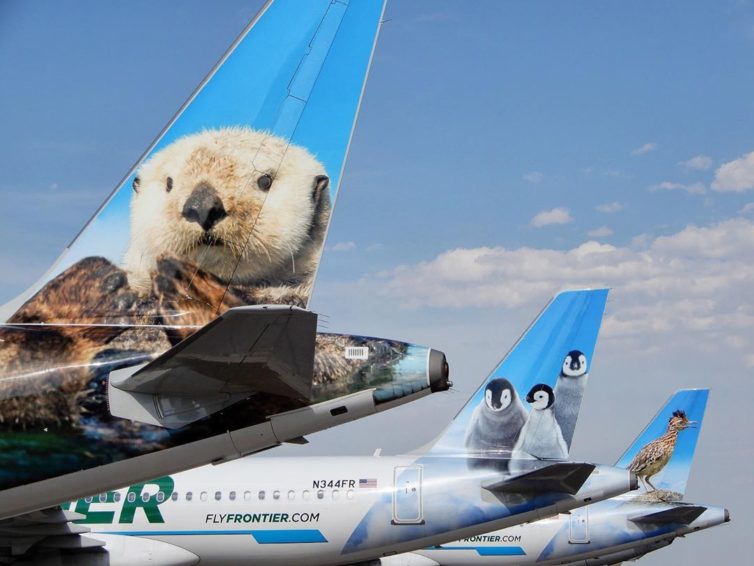
That otter definitely looks like the scheming type – Photo: Frontier Airlines
Frontier just announced its planned purchase of fellow ultra-low-cost-carrier Spirit Airlines. The result will be a low-cost juggernaut, ranking fifth in size among America’s airlines. One of our more prescient contributors, Steven Kimball, suggested this merger back in 2016. And from the airlines’ perspective the merger makes a lot of sense.
Obviously there’s the similarity in their approach to bare-fare pricing and bare-bones service. But also the all-Airbus narrowbody fleet, which will definitely contribute to a smoother merger and operational synergies. Both airlines operate the A320neo, and the new combined fleet will boast great fuel efficiency (cramming a ton of passengers into each plane also helps efficiency, I guess).
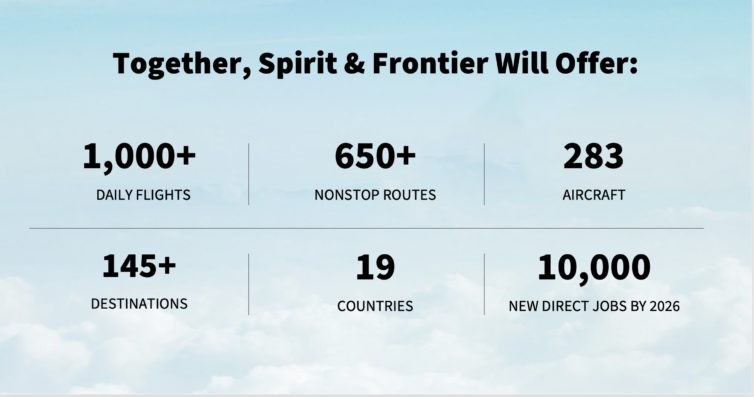
Image: Spirit Airlines
What’s the upshot for passengers? The airlines are trying to spin this as a positive, with Frontier loyalists getting better access to Spirit’s network in Central and South America, and Spirit-ers gaining more destinations in the western United States. The combined airline’s heft may help it better compete with the big four. At the same time, this means fewer individual airlines within the ULCC segment, which may drive up fares in that part of the market.
Also it’s no sure thing that the government will approve this plan. On one hand, the current administration has expressed a desire to keep inter-airline competition strong, and has been less friendly to mergers and partnerships. On the other hand, the administration is a little more embattled now and may not want to pick this fight. Or they may buy into the two airlines’ argument that a larger fifth player in the market is better for competition overall.
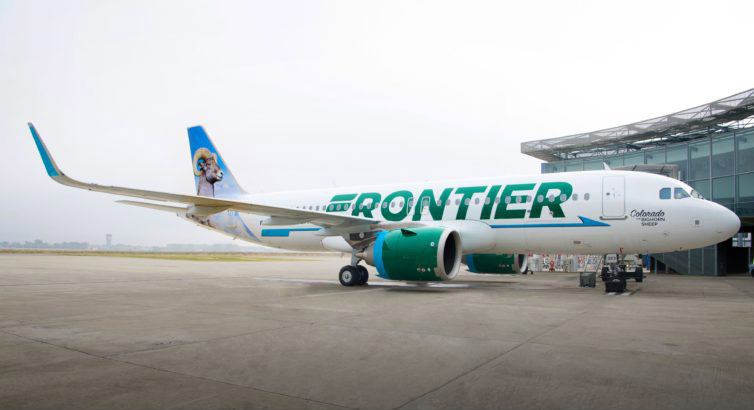
A Frontier Airbus A320neo at the Airbus Delivery Center – Photo: A. Doumenjou | Airbus
In the last few years, engine technology has improved significantly for narrowbody aircraft. The competitive nature of the current short-haul U.S., European, and Asian domestic markets have airlines competing on cost and efficiency to offer the lowest possible ticket prices to their customers. The single biggest direct cost on almost all routes is the fuel that the aircraft burns, and burning less fuel is always better. Frontier Airlines is one of a few Ultra Low Cost Carriers (ULCC) in the U.S. that has been aggressively pursuing a modern, fuel efficient, all economy-class fleet to complement their ULCC business model. They are a U.S. launch customer for the Airbus A320neo (or New Engine Option) family of aircraft and also operated some of the first commercial flights with the CFM LEAP-1A engine. I was lucky enough to ride on one of these shiny new aircraft and talk to the flight crew about how it is changing the way we fly.
-

-
A sunny day in DTW. Thanks to the Captain for some great pictures! Photo: Kevin Horn
-
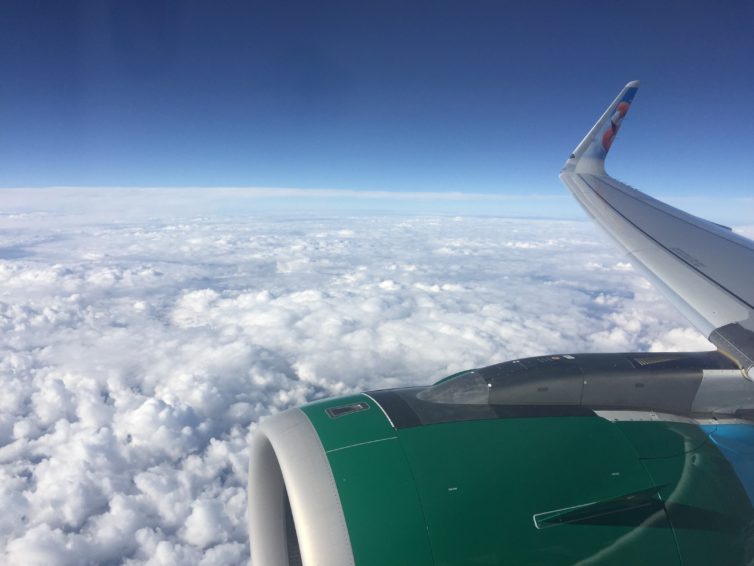
-
En-route to DEN high above the clouds. It’s great how quiet these new engines are at cruise. Photo: Kevin Horn
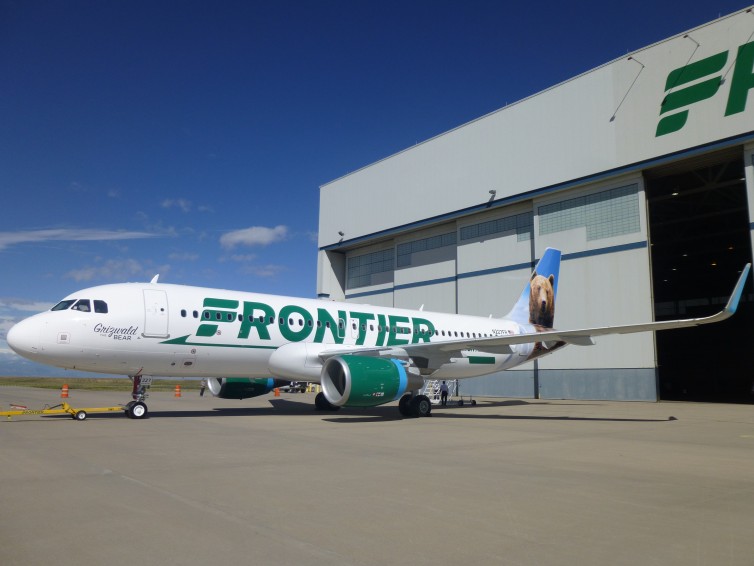
Frontier Airlines’ new livery in 2014 – Photo: Blaine Nickeson | AirlineReporter
Looking at the market today, and lots of talk about additional airline mergers, it seems that Frontier and Spirit joining forces would make sense.
With the recent completion of the American Airlines and US Airways merger, there are officially four major U.S. airlines that control over three-quarters of the domestic air travel market. The four airlines are: Southwest, United, American, and Delta. All of them have been through mergers in the last decade. The remaining twenty-five percent of the market is divided up amongst carriers such as JetBlue, Alaska Airlines, Spirit Airlines and Frontier Airlines, amongst a few others. There is a very small likelihood that another merger would occur amongst the major four airlines due to antitrust regulations. Therefore, any airline consolidation would most likely happen among the smaller carriers that control the remaining twenty-five percent of the market, in an effort to better compete with the four mega-carriers.
One potential merger that appears to be the most promising is a deal between Fort Lauderdale, Florida-based Spirit and Denver, Colorado-based Frontier. Spirit operates around 250 daily domestic departures, while Frontier operates at somewhere around 230 departures daily. The merger would combine two companies positioning themselves fighting to be the top ultra discount airline in the United States.
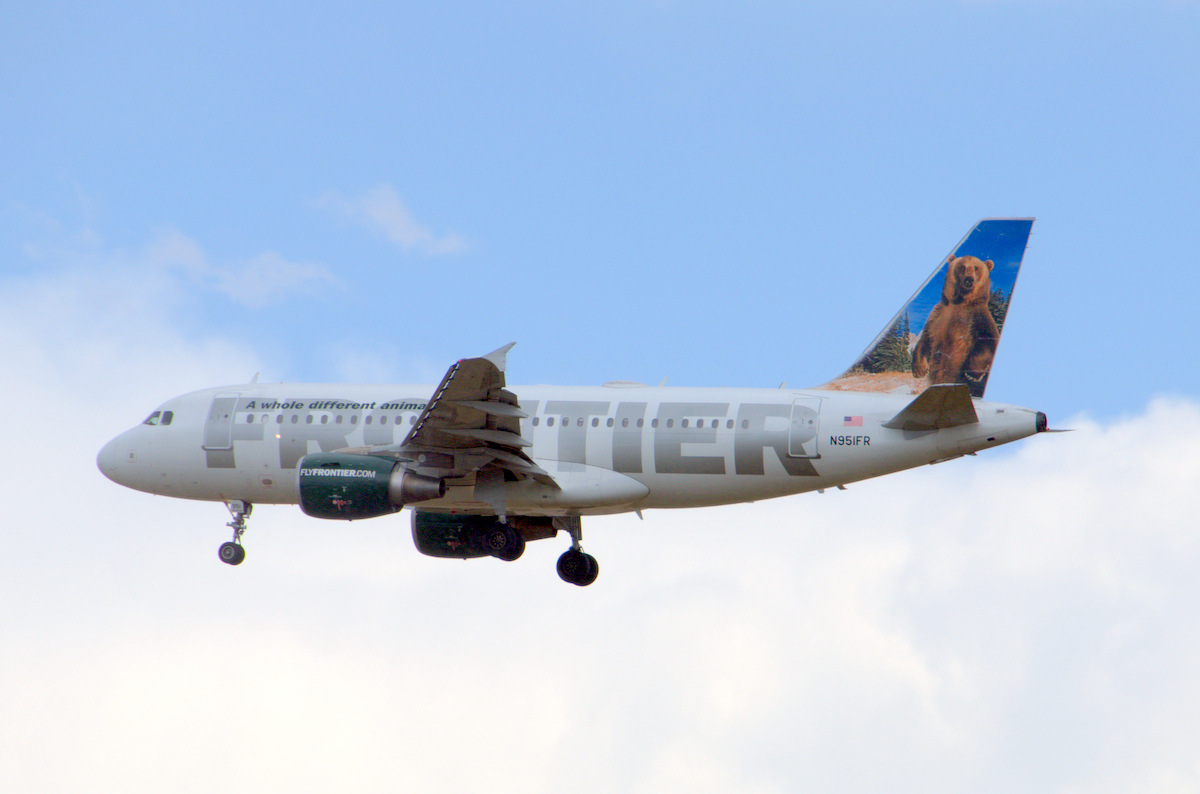
Benny the Bear, an Airbus A319 on approach for Denver International – Photo: JL Johnson | AirlineReporter
It has been a while since we here at AirlineReporter reviewed a mainline Frontier flight, four years to the month, in fact. Since then, Frontier has been freed from Indianapolis-based Republic and has made serious changes to its business model. Denver’s hometown airline and longtime low-cost carrier spent most of 2014 transforming itself into an ultra-low-cost carrier (ULCC). This change was prescribed by the company’s new owners – Indigo Partners. Indigo co-founder William Franke has some experience with ULCCs; in fact he has successfully invested in a number of them, most notably Wall Street’s favorite: Spirit.
I have long wanted to experience Frontier, but the timing and opportunity never worked out. That is until they published a $76 round-trip from Kansas City to Denver. While I wouldn’t necessarily consider myself a “fan” of the ULCC market, domestically they tend to be more interesting than say, the legacies. While I gravitate more to LCCs (like Southwest, Virgin, or JetBlue) it’s fun to check out their ULCC brethren. LCC and ULCC airlines like to suggest that their competitive prices create demand and with a crazy sub $100 fare, I suddenly found a two-day hole right in the middle of my work week.
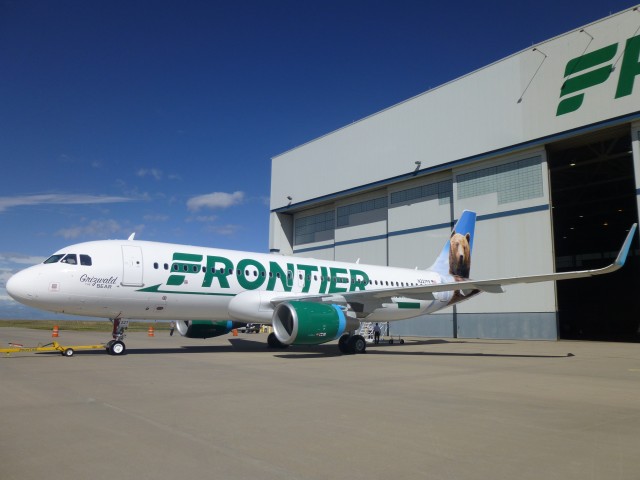
Frontier Airlines’ new livery, which draws upon their history – Photo: Blaine Nickeson | AirlineReporter
Frontier Airlines, the Denver-based carrier which has recently been pushing towards “ultra-low-cost carrier” status, today revealed a new livery which draws upon their history. The animal tails remain, but the Saul Bass-designed 70’s-era “F” returns, along with the cheat line arrow off the original DC-3s from the 1950s. (While the “F” is cool, my favorite Saul Bass livery still has to be the United tulip – I want to see a United 787 painted that way!)







